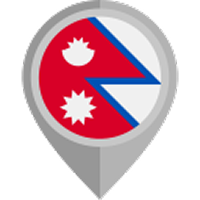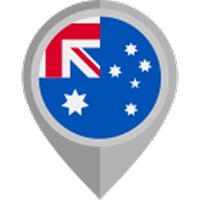Nepal vision | 14/08/2023
Are you ready to immerse in the marvellous beauty of the Himalayas and experience a wonderful trekking experience? Khopra Ridge Trek blends scenic views and majestic landscapes of the Annapurna Himalayas.
However, this journey is more than just a hike; it's a testament to the power of community-driven initiatives and sustainable tourism.
Khopra Ridge Trek promises unforgettable moments, meaningful encounters, and a profound connection with nature and the community.
But what sets the Khopra Ridge Trek apart?
Khopra Ridge Trek: Explore the Enchanting Annapurna Region
Khopra Ridge Trek, located in the heart of the Annapurna Conservation area, offers an uncharted adventure. In contrast, its breathtaking Himalayas vistas unfold against the Annapurna region's backdrop.
The less-traveled path promises awe-inspiring peaks, captivating landscapes, and diverse ecosystems for intrepid explorers.
At its core lies a transformative community-led initiative, part of the Annapurna Dhaulagiri Community trek, headed by Mahabir Pun. He is renowned for bringing the internet to rural Nepal. He ignited sustainable tourism innovatively, directing resources toward local schools and healthcare.
Let's uncover the guide to the beautiful Khopra Ridge Trek without further ado.
Trek Essentials
Quick Information about the Trek
You need to have essential details to ensure a successful trek journey. Additionally, you cover approximately 60 kilometres over 6-7 days.
The trek encompasses both challenging and moderate sections. As you ascend, you'll reach the pinnacle of Khopra Ridge at 3600 meters or the optional Khayer Lake at 4600 meters, offering unparalleled views of the Himalayas.

The path's difficulty level varies and ranges from moderate to hard, depending on the terrain. The journey commences from Nayapul and concludes in Ghandruk or Tatopani, with alternative return trails available.
You can also take side trips to famous destinations like Poon Hill and Annapurna Base Camp.
Required Permits and Fees
You should obtain the necessary permits is crucial before starting on the Khopra Ridge Trek.
Acquiring a Trekkers Information Management System (TIMS) card for 2000 rupees and Annapurna Conservation Area park fees for 3000 rupees is essential. These permits facilitate your journey and contribute to preserving the region's natural beauty and local communities.
Accommodation Options: Teahouses and Lodges
Throughout the trek, the availability of teahouses and lodges ensures comfortable accommodation. These establishments provide shelter, basic amenities, and a chance to connect with fellow trekkers. You can stay in teahouses to travel light, as you won't need to carry extensive camping gear. The funds generated from your stay directly support the local communities and contribute to developing schools and health clinics.
Guide and Self-Trekking Options
Khopra Ridge Trek provides flexibility in terms of navigation. While the trail can be tackled independently, hiring a guide can enhance your experience. It also provides insights into the local culture, history, and landscape.
In contrast, the Government of Nepal has formulated the mandatory hiring of guides from May 2023. Opting for a guide also ensures safety and expert assistance in unforeseen challenges.
When is the Best Time to Khopra Ridge Trek?
Nepal's diverse geography gives rise to distinct trekking seasons, with autumn and spring standing out. Autumn (September to November) offers clear skies and moderate temperatures, while spring (March to May) brings colorful blossoms and warm weather.
For the Khopra Ridge Trek, both seasons are ideal. October and November provide panoramic mountain views, while April and May offer vibrant landscapes. Early autumn nights can be chilly despite clear trails, with milder temperatures later. Spring might feature snowy higher-altitude trails, necessitating caution and proper equipment.
Unpredictable mountain weather requires adaptable clothing, emphasizing the importance of understanding weather and trail conditions.
Trail Variations and Extensions
The route unfolds additional trekking possibilities, enhancing the Khopra Ridge Trek experience.
Adding Poon Hill and Annapurna Base Camp
You can elevate your adventure by extending the trek to iconic destinations like Poon Hill and Annapurna Base Camp. At the same time, witness awe-inspiring sunrises over panoramic mountain vistas from Poon Hill's vantage point. And embrace the grandeur of Annapurna Base Camp's natural amphitheater surrounded by towering peaks.
Linking with Mardi Himal Trek
For the avid explorer, consider linking the Khopra Ridge Trek with the Mardi Himal Trek. You can pass through enchanting forests, diverse terrain, and culturally rich villages in the pristine Mardi Himal region.

Alternative Return Trails and Loops
You can visit different loops, each with its charm and challenges. It allows you to tailor your journey based on preferences and time constraints. These variations enrich your trek giving an unforgettable expedition through the breathtaking Annapurna region.
Navigation and Trail Marking
Navigating the Khopra Ridge Trek's trails is easier with understanding trail markers.
Role of Navigation Apps and Offline Maps
You should embrace technology as a tool for navigation. In contrast, explore the benefits of using navigation apps like Maps to enhance your trekking experience. You can download and use offline maps that ensure you can access route information without an internet connection and feel confident about your trail navigation.
Interaction with Locals for Guidance
Local knowledge is invaluable. There is the importance of involving the local community in navigation assistance.
From seeking guidance on the trail to understanding weather changes, it positively impacts connecting with residents and building a deeper appreciation for the region's culture.
Trek Costs and Budgeting
Planning your budget is crucial to preparing for the Khopra Ridge Trek. At the same time, gain insights into the components that make up the estimated costs, including permits, accommodation, food, transportation, and more.
Permits, Accommodation, Food, Transportation Expenses
Understanding the costs of obtaining permits, booking accommodation, and ensuring a steady food supply during your trek would be best. Additionally, explore transportation expenses, including how to reach the trailhead and return from the trek, that enables you to plan your finances effectively.
Accommodation and Food
You can immerse yourself in the world of accommodation on the Khopra Ridge Trek. The unique experience of staying in teahouses and lodges along the trail.
Additionally, discover these establishments' cozy and communal atmosphere, contributing to the trek's distinct charm.
Room Options, Facilities, and Services
You can get into the details of room options, facilities, and services available in teahouses and lodges.
Whether you're seeking a private room or a shared dormitory, this section guides you through the accommodation choices. The basic amenities, sanitation facilities, and additional services are provided to trekkers.
Food Options and Recommendations
Savor the flavours of the trek with an exploration of food options. It would help if you indulged in the culinary delights available in teahouses and lodges, from local Nepali dishes to international fare.
Meanwhile, nourishing meals fuel your journey, and you receive recommendations on dishes to try. It caters to diverse preferences and dietary needs.
Positive Impact and Community Involvement
The Khopra Ridge Trek goes beyond personal exploration. You should know how your trek contributes to sustainable tourism, empowers local communities, and fosters cultural exchange. It makes your journey even more meaningful.
Contribution to Local Schools and Health Clinics
You should know how the trek supports local development. At the same time, discover how funds generated from the trek are channeled into improving education and healthcare facilities in the region. You actively contribute to the well-being and future of the communities you encounter.
Connection with Mahabir Pun's Initiatives
Mahabir Pun's visionary initiatives are integral to the trek's essence. The innovative spirit and commitment to community development have shaped the Khopra Ridge Trek.
A deeper understanding of his projects, including establishing wireless internet connections in remote areas, and appreciation of his work's transformative impact on the region.
Trek Itinerary and Trail Experience
We have provided a detailed journey through the Khopra Ridge Trek with a comprehensive day-by-day itinerary. You can explore the trek's progression, including starting points, stopping points, and distances covered daily.
Notable Stops, Landmarks, and Viewpoints
The treasures along the trail as you encounter notable stops, landmarks, and breathtaking viewpoints. From charming villages to panoramic vistas of the Himalayas, the segment highlights the must-see attractions that make the trek a remarkable experience.
Descriptions of Trail Conditions and Challenges
You can prepare for the trek's varying terrain and challenges by gaining insights into trail conditions. It understands the terrain's characteristics, elevation gains, and potential obstacles.
To wrap up, As your Khopra Ridge Trek adventure comes to a close, take a moment to reflect on the captivating landscapes, cultural interactions, and personal achievements that have enriched this journey. Nepal Vision Treks provide an amazing trekking journey with a memory to cherish.
FAQS
1) How tall is the Khopra trek?
The Khopra Ridge Trek reaches an altitude of approximately 3,660 meters (12,008 feet).
2) Which is the highest point of the Annapurna base camp trek?
The highest place of the Annapurna Base Camp trek is 4,130 meters (13,550 feet) at the Annapurna Base Camp itself.
3) Can you trek Annapurna without a guide?
It is possible to trek the Annapurna region without a guide, but a guide is recommended for safety, navigation, and cultural insights.
4) What is the altitude of the Khopra trek?
The Khopra Ridge Trek reaches an altitude of about 3,660 meters (12,008 feet).
5) What is the best age to start trekking?
Trekking can be enjoyed at various ages, but starting in your 20s to 50s is generally considered ideal for a balance of physical fitness and endurance.
6) Is the Khopra Ridge Trek suitable for beginners?
The trek is moderately challenging, but beginners can enjoy it with proper preparation.
7) Are trekking permits necessary for the Khopra Trek?
It would help if you had permits, including the TIMS card and Annapurna Conservation Area permit.
8) Are teahouses available along the Khopra Ridge Trail?
Yes, there are teahouses and lodges offering accommodation and meals.
9) Is prior high-altitude trekking experience required?
While helpful, the Khopra Trek is moderate in altitude and can be attempted by those with reasonable fitness levels.
Similar Resources:
Trek to Everest Base Camp - 14 Days


![5 Most Easiest Treks in Nepal [Ranked]](https://d2i9o55ouvfvau.cloudfront.net/public/upload/64f03dcd536351693466061.webp)






